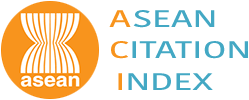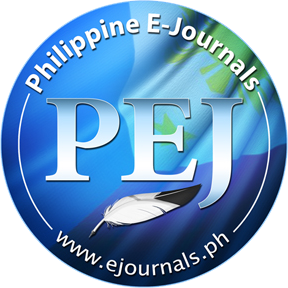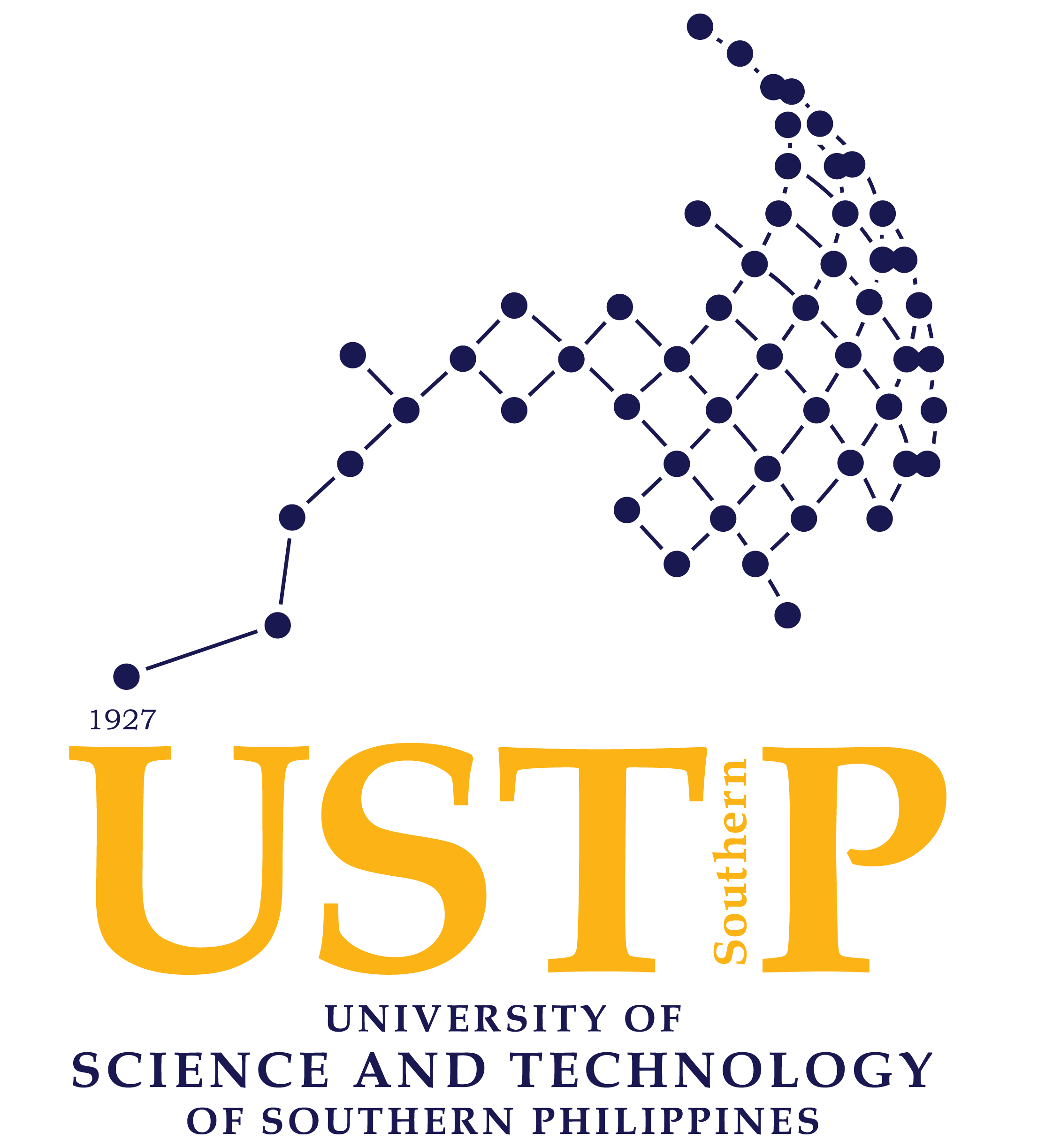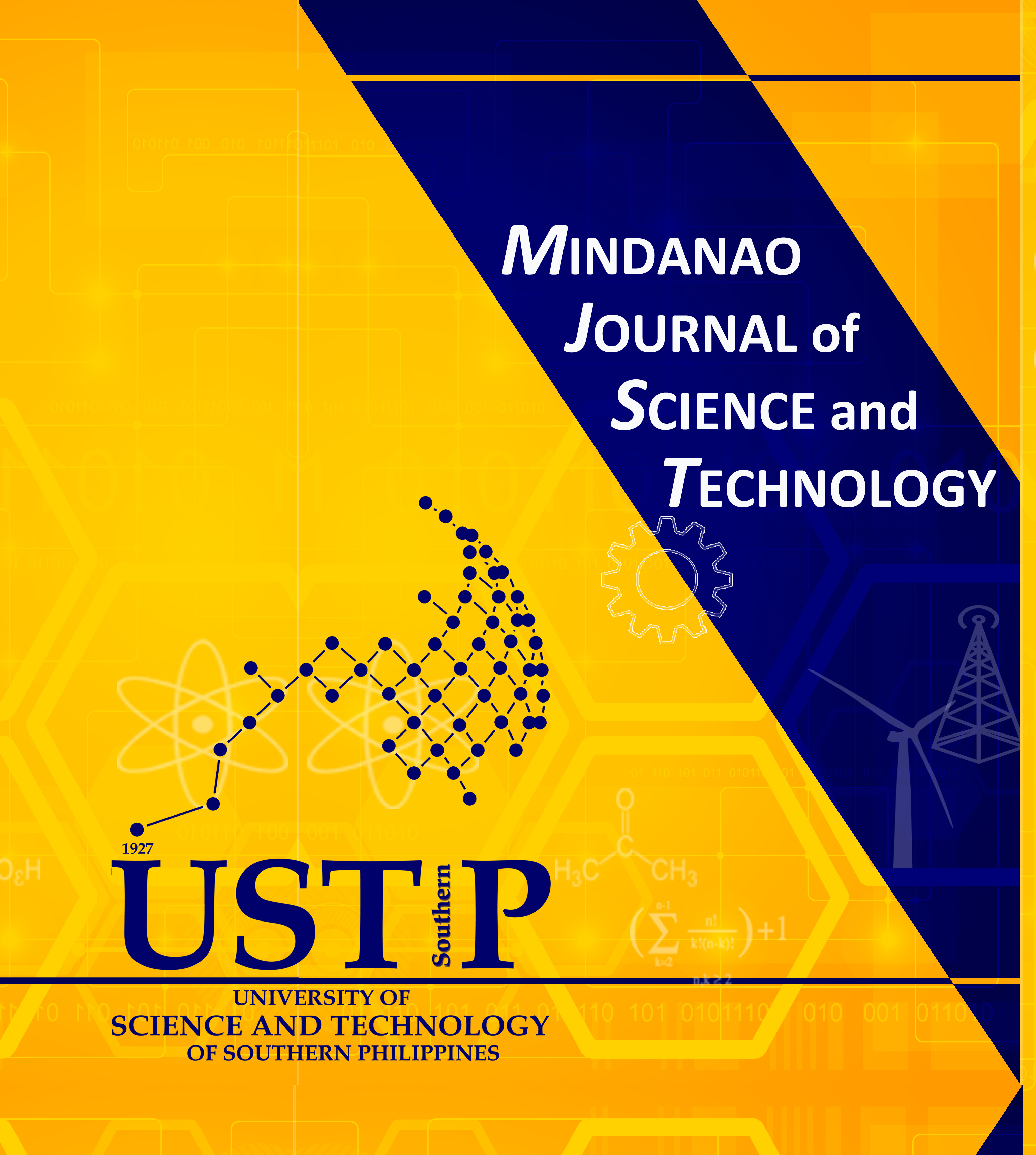Information For Authors
MJST Information for Authors
- The Mindanao Journal of Science and Technology (MJST) aims to publish researches in the areas of science and engineering disciplines covering the main areas of science and technology and other related studies. Contributions shall be in English. Manuscripts should be proofread and have English language errors corrected before submission as English of poor quality and clarity is a major cause of rejection or delay in acceptance. A certificate of proofreading from professional editors is required. In the certificate, the credentials and affiliations of the editors must be indicated. The editorial team will likewise check the quality of editing. If found inadequate, the manuscript will be returned to the corresponding author for further proofreading.
- Submission of the manuscript implies that the work described has not been previously published nor it is under consideration for publication elsewhere. Plagiarism, repeated publication, etc., will be checked at the first phase of processing and, if detected, will result in a rejection and blacklisting..
- The submission file shall be in a Microsoft Word document.
- Along with the letter of intent to publish, a manuscript can be submitted to the Editor-in-Chief by registering on and logging into mjst.ustp.edu.ph. Email submissions are prohibited..
- The manuscript should be typed single-spaced throughout the A4 size paper with 2.54 cm margins on all sides using 12-point Times New Roman font. A single space between paragraphs and double space between the last paragraph of a section and the next section title must be allocated. The contents should be arranged as follows: title, abstract, keywords, introduction, methodology, results and discussion, conclusion/recommendation, acknowledgement and references. All pages must be numbered consecutively. The use of footnotes is discouraged. Under the above-mentioned settings, a manuscript should not be longer than 20 pages, including the reference section.
- Below is the suggested format for a manuscript:
- Title: This must be concise and descriptive of the contents. The title is followed by the name(s) of the author(s), affiliations (department or college and the university or institution), complete postal addresses and e-mail information. If there is more than one author, the corresponding author, who will handle correspondence at all stages of refereeing, publication and post-publication, should be clearly indicated.
- Abstract: A concise and factual abstract is required. The abstract should state briefly the research problem/gap, research objectives, methodology, the principal results with number values and major conclusions. An abstract is often presented separately from the manuscript; hence, it must be able to stand alone, preferably typed in one paragraph and should not exceed 250 words.
- Keywords: Immediately after the abstract, a maximum of 5 keywords should be provided indicating the scope of the paper. They should be arranged in alphabetical order..
- Introduction: The introduction should provide a clear statement of the problem and sufficient background information to set the work in context. It must contain a discussion of pieces of related literature to highlight their similarities and differences, thereby establishing gaps, which the work hopes to fill in. In the last part of this section, the statement of objectives should be written.
- Methodology: This should be concise but provide sufficient detail to allow the work to be repeated by others. However, only truly new procedures should be described in detail; previously published procedures should be cited, and important modifications of published procedures should be mentioned briefly. The study protocol number, and the name of the issuing Institutional Ethics Committee and Animal Care Unit or Provincial/City/Municipal Veterinary Office for health-related studies involving human participants and animal subjects, respectively, should be written in this section. Moreover, it must be indicated herein manufacturer and country of origin of all equipment (including the make and model), and chemical and reagents used in the study.
- Results and Discussion: Results should be presented in a logical sequence in the text, tables, graphs and figures; repetitive presentation of the same data in different forms should be avoided. The discussion of results should provide descriptions and explanations of observed phenomena, trends, optimized values and other information that illustrate how these results relate to those obtained in similar previous works. Authors are reminded that the results and discussion are not separated each result must be followed directly by its corresponding discussion.
- Conclusions / Recommendation (optional): The conclusion should present a summary of the important contributions of the study. Future related works may also be cited.
- Acknowledgement: This should be placed in a separate paragraph at the end of the text, immediately before the list of references. The acknowledgement of people, grants, funds, etc., should be brief.
- References: It should be ensured that every reference cited in the text is also present in the reference list. Gray literature, unpublished works, or references that are not accessible should not be cited. References to the paper “In Press” must mean that the manuscript has been accepted for publication. All citations in the text should refer to (1) a single author: the author’s name (without initials, unless there is ambiguity) and the year of publication; (2) two authors: both authors’ names and the year of publication; (3) Three or more authors: first author’s name followed by “et al.” and the year of publication. Multiple references should be cited in chronological order. Citations may be made parenthetically or narratively as in these examples: “as demonstrated (Allan and Jones, 1995); Kramer et al. (2000) have recently shown ...”. The list of references should be arranged alphabetically by the author’s name. More than one reference from the same author(s) in the same year must be identified by the letters “a”, “b”, “c”, etc., placed after the year of publication. The manuscript should be carefully checked to ensure that the spelling of the author’s names and dates are exactly the same in the text as in the reference list.
- Reference to a journal publication: Baumann, T., Fruhstorfer, P., Klein, T., & Niessner, R. (2006). Colloid and heavy metal transport at landfill sites in direct contact with groundwater. Journal of Water Resources, 40(14), 2776-2786. https://doi.org/10.1016/j.watres.2006.04.049
- Reference to a book: Davis, M.L. (2005). Introduction to environmental engineering (3rd ed.). New York, United States: McGraw Hill Inc.
- Reference to a chapter in an edited book: Mettam, G.R., & Adams, L.B. (1999). How to prepare an electronic version of your article. In: B.S. Jones & R.Z. Smith (Eds.), Introduction to the electronic age (pp. 281-304). New York, United States: E-Publishing Inc.
- Reference to a thesis or dissertation: Reid, J.O. (2009). Sustainable energy efficiency in households of the Philippines (Dissertation). College of Engineering and Architecture, University of Science and Technology of Southern Philippines, Cagayan de Oro City, Misamis Oriental, Philippines.
- Reference to a conference proceeding: Weber, D.J., & Hess, W.M. (1985). Simple solar model for irradiance. In E. Bilgen & K.G.T. Hollands (Eds.), Proceedings of ISES World Congress, Montreal, Canada, 123-132.
- Reference to an internet source: Dunn, L.E. (2013). Concrete technology manual. Retrieved from http://www.dot.ca.gov/hq/esc/construction/manuals/OSCCompleteManuals/CTM2013.pdf
- Reference to a news article: Nazario, D. (2020, November 28). Okra toothpaste, anyone? Manila Bulletin. Retrieved from https://mb.com.ph/2022/04/20/okra-toothpaste-anyone/
- Reference to a software: R Core Team. (2014). A language and environment for statistical computing [Computer software]. Vienna, Austria: R Foundation for Statistical Computing
- Tables: Tables should be self-contained and complement, but not duplicate, the information contained in the text. Each table should be inserted into the main text, numbered consecutively in Arabic numerals and supplied with a heading and a legend. Tables should be single-spaced and vertical lines should not be used to separate columns. They should have only three horizontal lines (under the title, under the headings of the columns, and at the end of the tables.) Column headings should be brief, with units of measurement in parentheses.
- Figure Captions: It should be ensured that each figure/illustration has a caption. The captions must be supplied and attached below the figure. A caption should comprise a brief title (not on the figure itself) and a description of the illustration. Text in the illustrations themselves should be kept to a minimum.
- Figures and Photographs: Figures and photographs should be in an acceptable format (.tiff, .eps, .jpeg, or MS Office files) and of high resolution. Figures and photographs should be embedded in the manuscript and not as parts of appendices, which the journal disallows. Times New Roman font must be used if the Figures and photographs have texts and numbers. Figures must be editable so that they can be adjusted later on if the manuscript is accepted for publication.
- Mathematical Texts and Equations: Equations should be aligned at the center and numbered consecutively, e.g., (1), (2), etc., at the right margin, and thus can be referred to as such in the text. Make sure to provide meanings on all symbols used.
- Abbreviation and Units: SI units (meter, kilogram, etc.), as outlined in the latest edition of Units, Symbols and Abbreviations: A Guide for Medical and Scientific Editors and Authors (Royal Society of Medicine Press, London), should be used wherever possible. Statistics and measurements should always be given in figures; that is, 10 mm, except where the number begins the sentence. When the number does not refer to a unit measurement, it is spelled out, except where the number is greater than nine. Use only standard abbreviations.
- Authors are required to study carefully the instructions for the preparation of manuscripts and the MJST Publication Ethics and Malpractice Statement. Please follow them properly before submitting your manuscript. Authors who fail to follow these instructions are liable to have manuscripts returned to them before review and to be asked to prepare their manuscripts in the prescribed format of the journal. By submitting a manuscript in the prescribed format, an author can avoid delays in acceptance and publication.
- The Editor-in-Chief reserves the right to adjust the style to achieve a certain standard of uniformity.
- After the pre-review and double-blind peer-review process, the corresponding author will be notified of acceptance, rejection, or need for revision. Manuscripts will not be returned to an author unless specifically requested, or unless reviewers have provided annotations that will be useful to the author. Authors who are instructed to revise their manuscript based on the pre-review and double-blind peer-review comments should do so within 10 and 45 days, respectively.
- Proofs: An electronic proof will be sent to the corresponding author as a .pdf file for checking. Page proofs are considered to be the final version of the manuscript. Except for typographical or minor clerical errors, no changes will be made in the manuscript at the proof stage, except with the Editor-in-Chief’s agreement.
- Copyright: Submission of a manuscript implies that the work described has not been published in a refereed journal before (except in the form of an abstract or as part of a published lecture); that it is not under consideration for publication elsewhere; that if and when the manuscript is accepted for publication, the authors should execute the transfer of copyright agreement with the publisher as a requirement for publication of the manuscript.
- Article Processing Charge (APC): All accepted papers submitted from September 1, 2024, onwards will be subject to an APC based on USTP BOR Resolution No. 121, S. 2024. The charges are as follows:
- USD 120 for authors primarily affiliated with institutions outside the Philippines
- Php 5,000 for authors primarily affiliated with institutions within the Philippines
- Free for the main author affiliated with USTP.
(Date of Revision: September 1, 2024)



